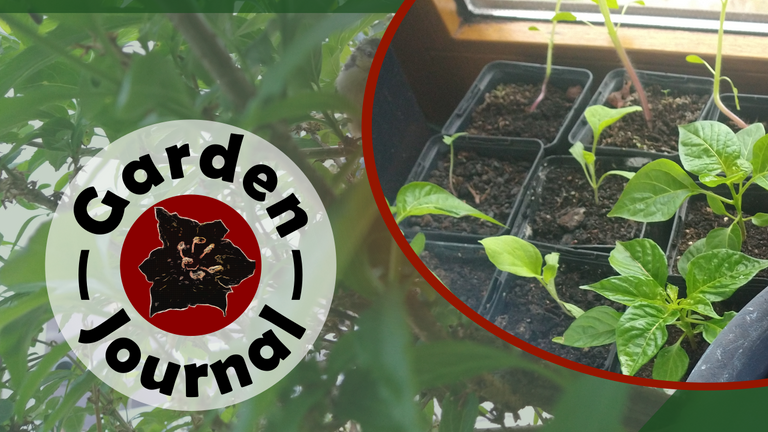
I guess it's finally spring again and it's definitely too late for those January peppers now. Looking back at my photos, it seems like I'm indeed a bit late, but also some of the seeds that I really wanted took some time to arrive, too. The birds are already busy building their nests and like every year we got a pair of blacktits and I also saw a pair of bluetits checking out the new box that I set up last minute. Unfortunately the magpies decided to build their nest in our pinetree right next to the nesting box. Good thing I added a cover to the entrance hole, that hopefully prevents them from stealing the baby birds. But before we start, how about we play a fun game of 'Where's Waldo?' with our squirrel in the meantime?
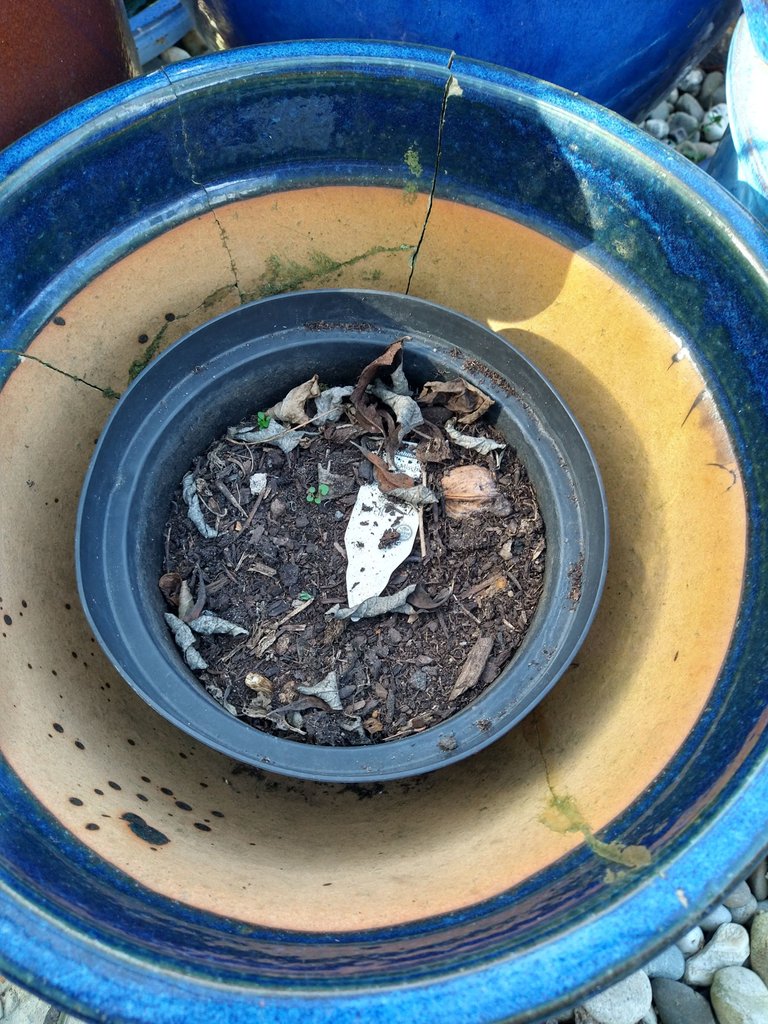
Where's Walnut? Our squirrel likes to hide nuts in last year's planting pots. Can you spot them?
Which seeds are we trying out this year?
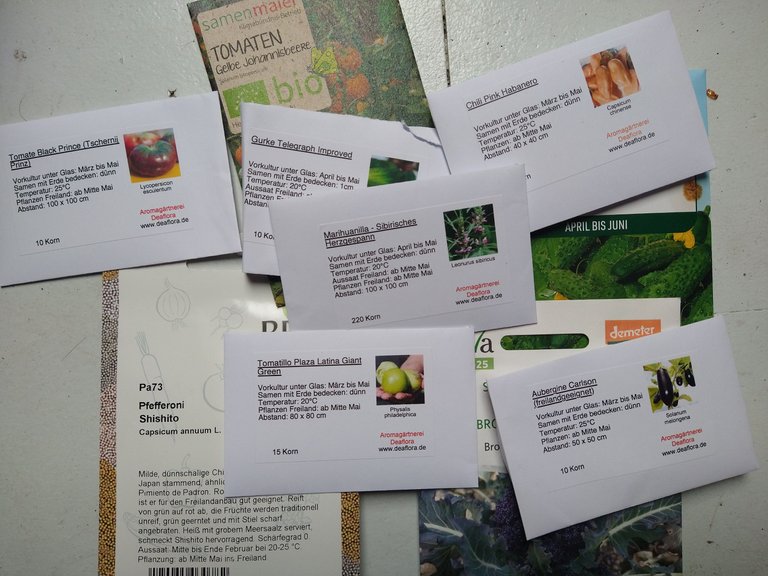
One of the most exciting parts about gardening is the fact that there is an unlimited variety of seeds to try. On my constant search for tasty chilis without pain-inducing properties I found two promising candididates. The first goes by the name of 'Pink Habanero' and is exactly that but free of capsaicin. The second one I ordered last minute with my grafting equipment and is supposed to be a Japanese variety of the 'Pimiento de Padron' called 'Shishito'. Apparently this variety is not randomly ruining your day by beeing a disguised Carolina Reaper. I also have some seeds from a storebought 'Pimiento de Padron' which for some reason have never been spicy and might be worth a test.
Tomatoes have been a bit disappointing last year so I decided to try the 'Tschernij Prince' that has been praised by other garden influencers for quite some time now. Beeing an old russian tomato, it should be pretty tough, even if the summer turns out to be Siberian. Aside from that I'm also rocking a wild currant tomato, mostly for the purpose of grafting, but some will for sure be grown for harvesting as they should also be pretty forgiving when it comes to pests and bad weather.
Speaking of Siberia, something funkey that I already wanted to try last year is the Siberian motherwort leonurus sibiricus that looks almost like weed and is used for teas with allegedly medical properties regarding blood pressure, anti-cancerous, antibacterial and anticoagulant effects. The bees are certainly going to love it.
In order to replace the 'Suyo Long' cucumber that I wasn't particularly fond of, I ordered the 'Telegraph Improved' that claims to be grown in Great Britain for well over 100 years. Not sure how much of a quality mark that is, but we'll see later this year.
I'm also planning to do a lot of pickeling and fermentation, which is why a second cucumber for pickeling had to be added to the list.
To finish it off the 'Ciscineros' Tomatillo will the replaced by the 'Plaza Latina Giant Green'.
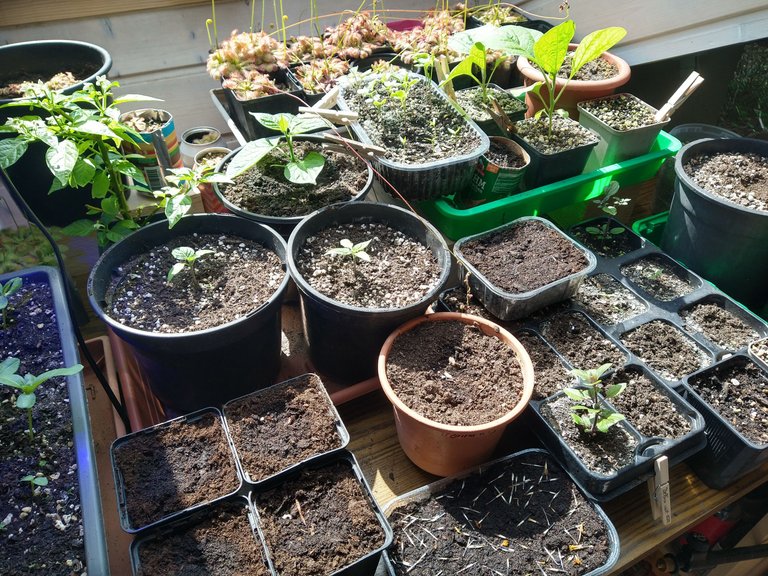
The look at my window right now. Rocoto chili and eggplants are already growing strong.
Soil experiment
I'm not a big fan of storebought gardening soil, but for seed starting it's impossible to use our garden soil and even the recycled potting soil is not working very well sometimes.
Therefore I went to the stores and got two bags of professional gardening soils. The first one from the pharmacy hardware store is specially made for seedlings and costs a whopping 6,99€. At our local discounter I found potting soil that is not specifically made for seedlings, but still has a fairly low content of nutrients and might work as well.
Both of those soils have a major flaw as they are based on peat, something anyone with a sense for nature should avoid at all cost. A more environmentally friendly alternative would be coconut based soil, but the one I found had too much potassium for this purpose. I'm also using some of the old potting soil for reference, so we can compare three different soils.
Anyways, I'm going to test both of these soils to see if it's worth the extra cost for the sowing soil and for the next time I'll keep an eye out for low fertilizer, fine coconut soil.
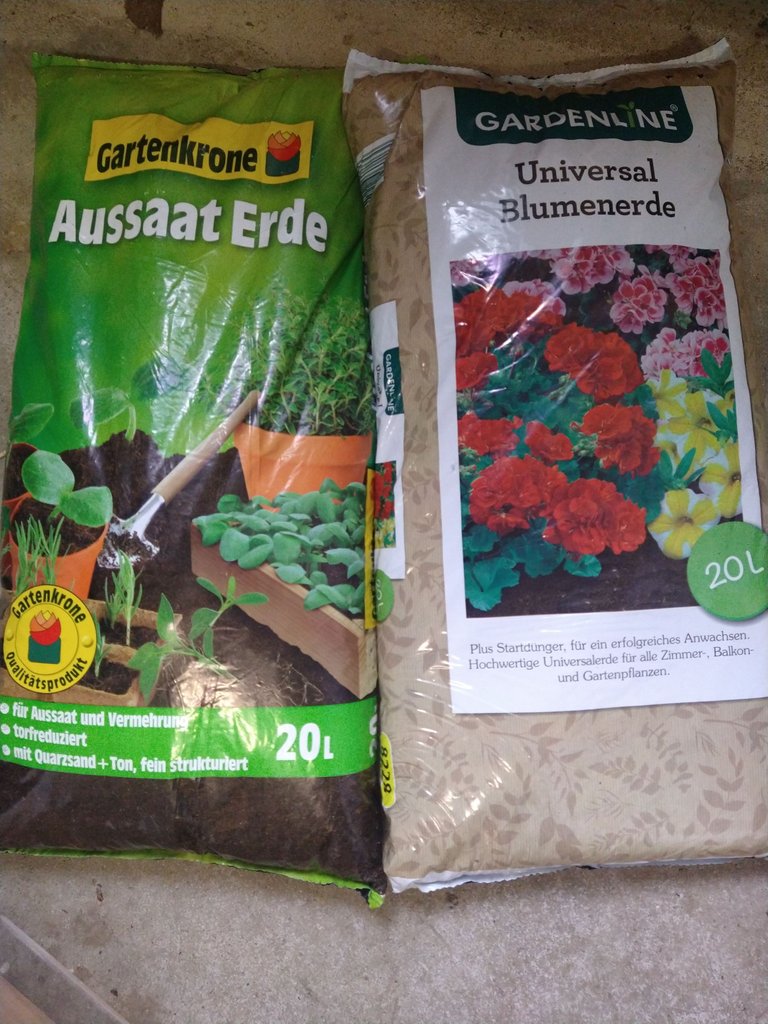
€6.99 VS €1.99
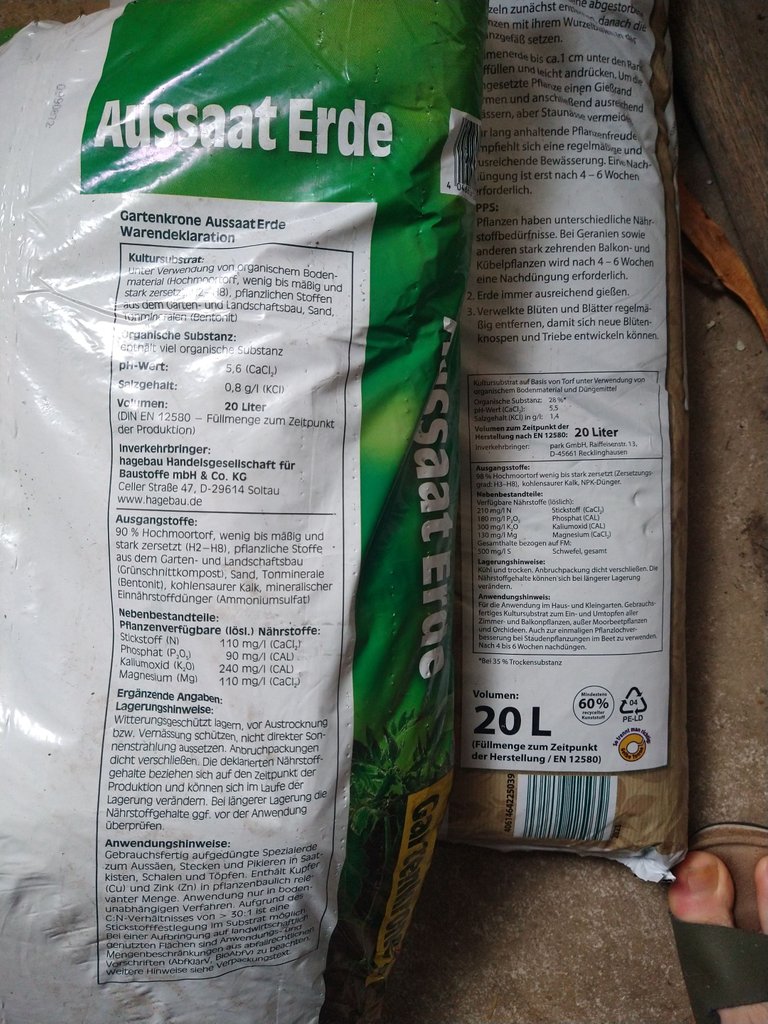
90% peat is considered 'reduced peat'.
Let's check the outdoors
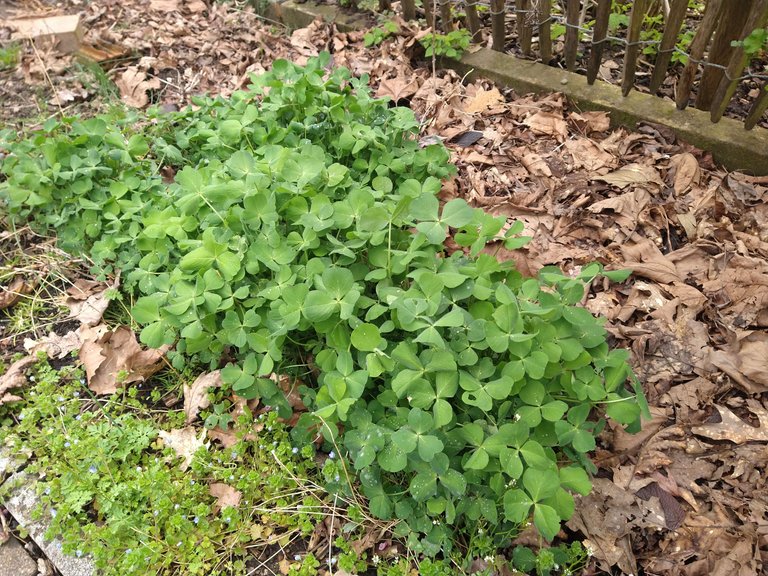
A mixture of leaf-mulch and green manure keeps weeds supressed and improve the soil quality. Crimson Clover is not supposed to be perennial in our climate, but it sure is.
The weather currently is quite moody and it's hard to get anything done outdoors. Luckily I cut the most important trees in fall already but due to the rainy days I can't really try myself in grafting and my cold frame is still far from beeing fixed after the tarpaulin disintigrated after two seasons.
So far I was only able to remove the plastic bags that I used for weed control and replaced them with wood chips from the few trees that I cut. Even though the used gardening soil bags worked really well for that, I wanted them removed to avoid more microplastics in my garden.
Also some snap peas have been planted as they are a cool-season crop that can be directly sown outdoors. Last year the 'Carouby de Maussane' Peas didn't work at all and if they don't look convincing in May, they might just get whacked prematurely and replaced by pole beans. I decided to use the part of the garden that was heavily leaf-mulched last year and otherwise not treated with compost. Peas like a high pH, which might have been the reason they failed last time and I don't feel like changing the pH of my main garden, as most crops prefer a more acidic soil. Sowing was quite easy due to the lack of weeds under the leaf-mulch. So far the soil does not look any different, but after only one winter of mulching this could be expected.
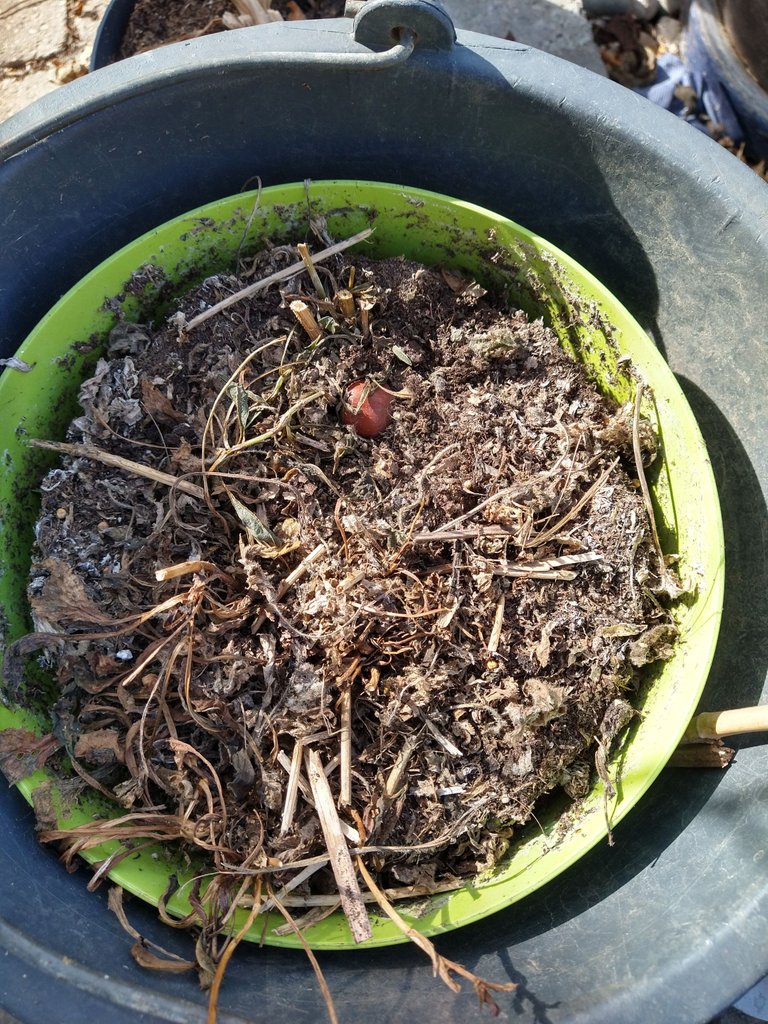
Where's walnut?
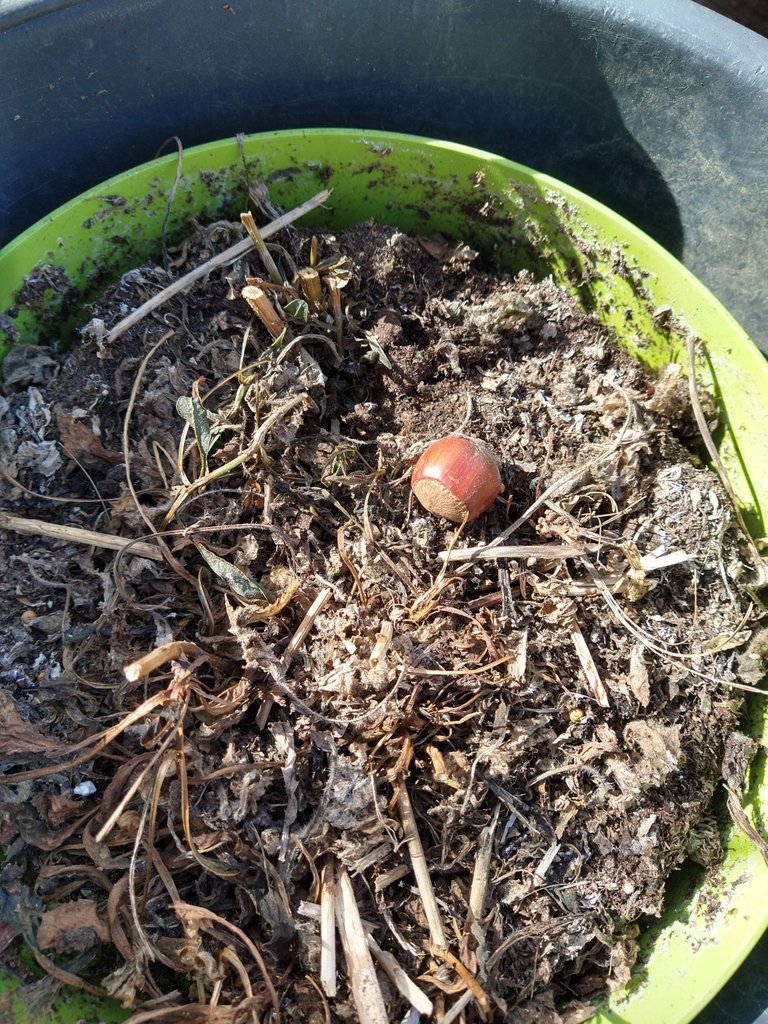
This is hazelnut, not walnut, duh!
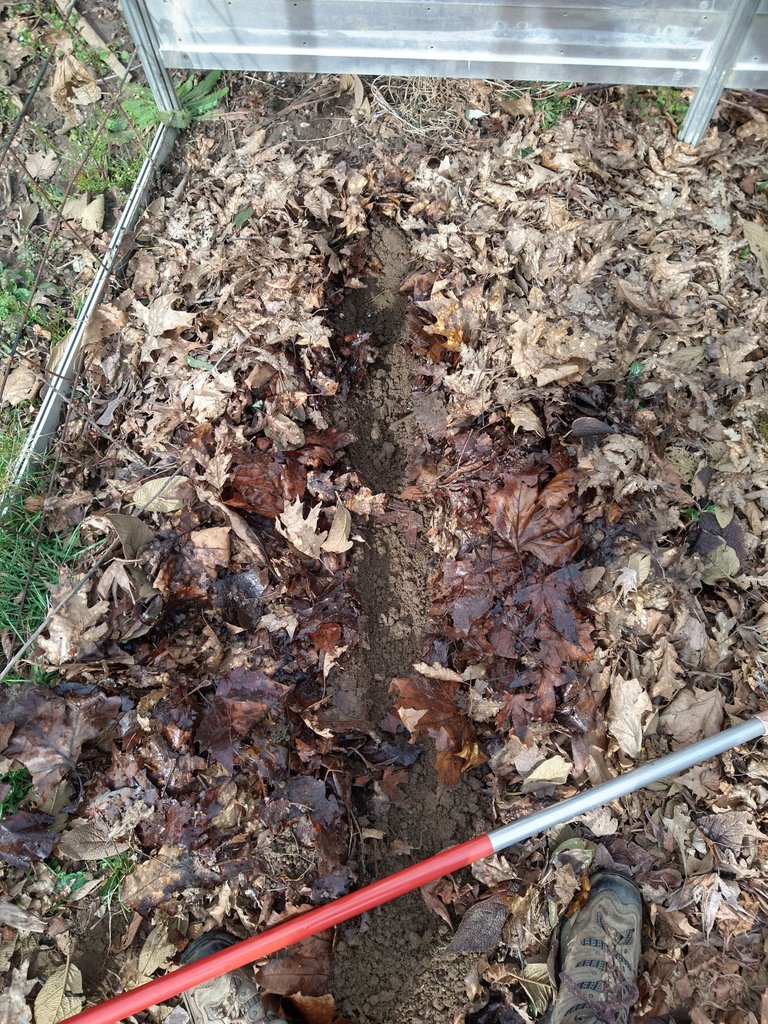
Removing the leaves is a bit of a fuzz, but the soil underneath is almost completely free of weeds and hopefully improved in quality. The leaves will also provide protection from the sun during summer and keep the soil moist.
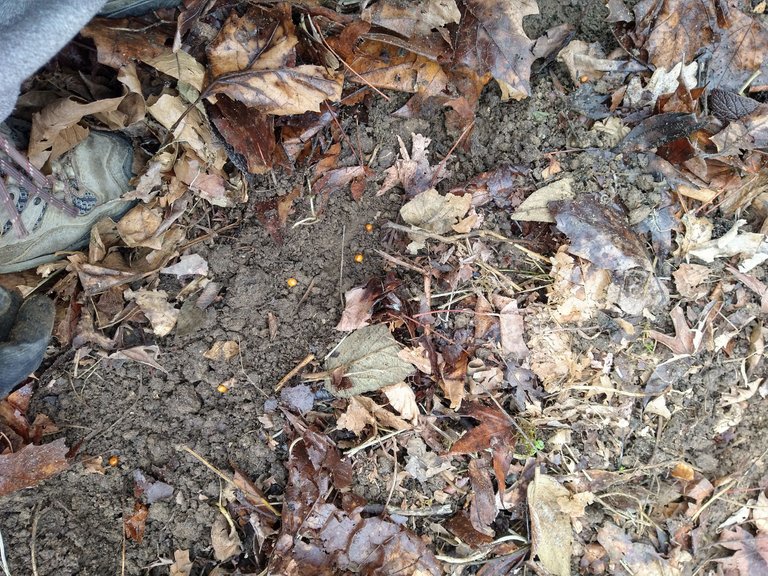
There goes the peas that have been soaked in water for a day.
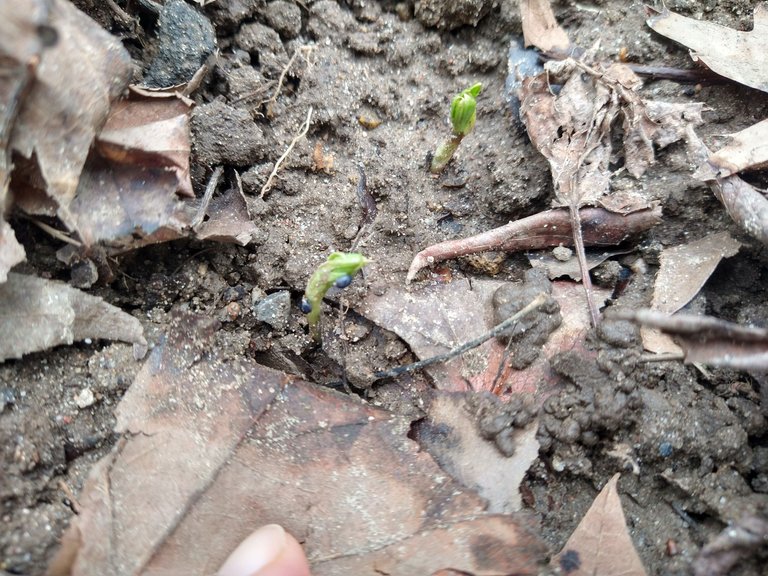
And a few days later the peas are starting to grow, but the baby slugs are already at the job. This is obviously a negative side effect of mulching, as it provides shelter for those humidity loving creatures.

Where's Walnut?
What's next?
My fridge is still filled with the cuttings from our corksrew hazel and the currant. My plan has been for years to craft the corkscrews onto a regular hazel to make it more compact, but so far it never worked. Also the currant plants have been dying, so I wanted to save them by grafting them on the wild shoots that occur at the base of the bushes. According to the weather forecast we will have a few days of sunny and cold weather, so hopefully I'll find an opportunity to tackle this.
The flowering peach will certainly not like the -2°C that we are facing, so fingers crossed we are still getting some juicy peaches this year...
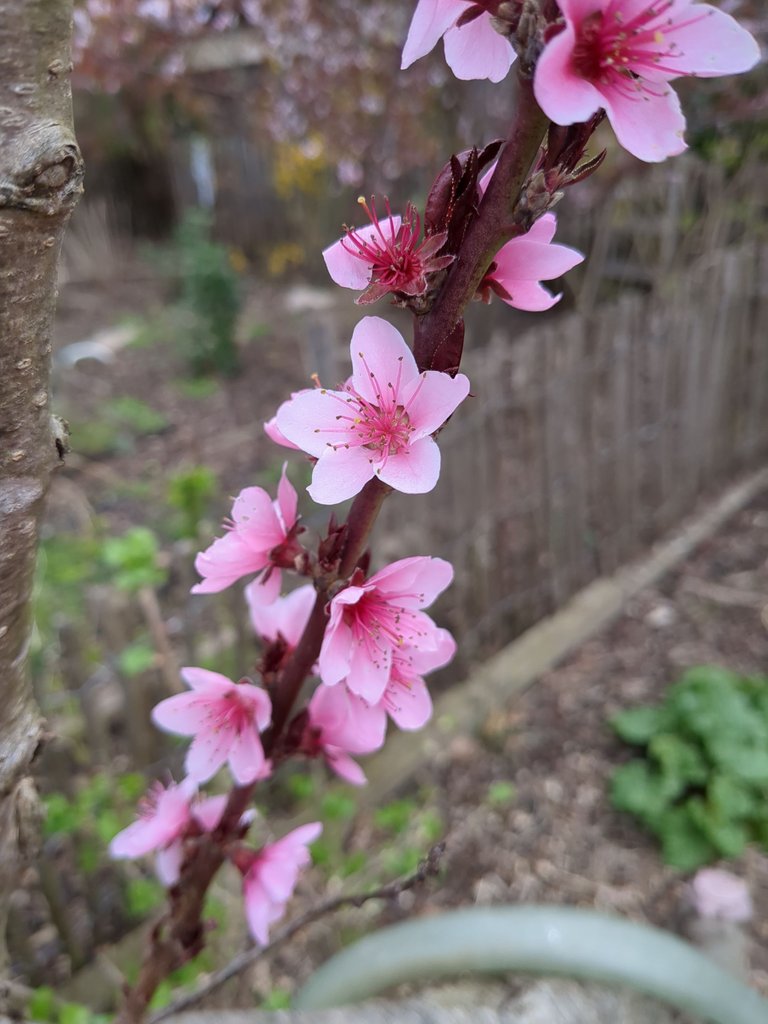
Peach tree full of flowers.